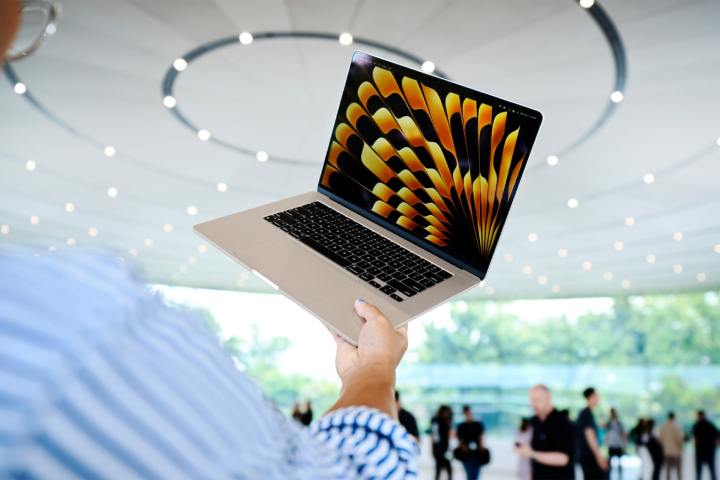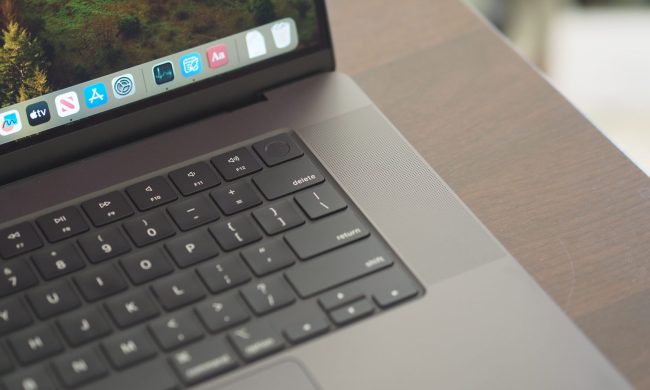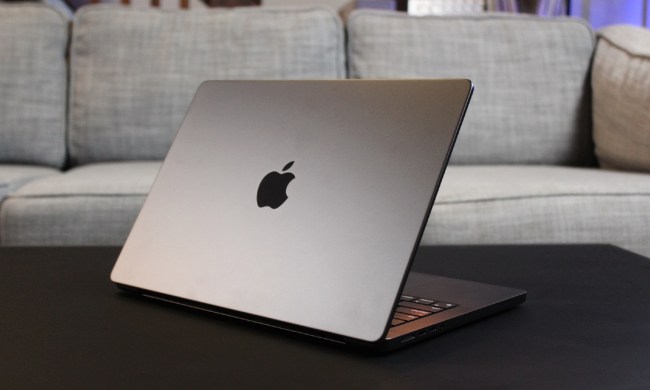
There’s no doubt that Apple’s best MacBooks have a reputation for long-lasting quality, but what sort of longevity can you expect to get out of one? And just how long will Apple continue to support your laptop? Finally, what are the differences between the MacBook Air and the MacBook Pro?
These are no doubt important questions to consider when buying a new MacBook or even considering an upgrade. Here’s everything you know about the longevity of your MacBook.
Lifespan of MacBook hardware

One of the most important factors in a MacBook’s lifespan is immediately obvious when you first see one: its aluminum construction. Unlike some rivals that build their laptops from reams of plastic, a MacBook’s all-metal frame makes it incredibly durable and long-lasting. Other components are likely to fail long before the chassis wears out.
Apple also oversees every part of its laptops’ hardware and software, meaning the company doesn’t build them with any off-the-shelf parts made for other devices. That helps ensure everything meets Apple’s high benchmark for durability (there are even stories of Jony Ive, Apple’s former chief designer, agonizing over the screws used in the iMac G3, such was the company’s penchant for quality).
What does this all mean in practice? Realistically, you can expect at least five years of service out of your MacBook, but the reality is likely to be noticeably longer. We say five years because, after Apple stops selling a MacBook, that’s how long you get before it declares it to be “vintage” (more on that later), but that doesn’t mean that’s the point when it stops working. It’s not uncommon to have a MacBook that lasts seven or eight years (or even longer). That’s not something many PC brands can claim.
In fact, MacBooks last so long that you might run out of official support before the laptop shows signs of dying.
On the other hand, MacBooks are infamous for having very few parts that you can service yourself. The battery, memory, and storage are all soldered down to the motherboard, meaning they can’t be easily replaced by owners (or by a third-party repair shop). This is the biggest limiting factor for how long a MacBook can last, especially on the battery front. There are settings to turn on that will prolong the life of your battery, but ultimately, that’s likely the reason many people are pushed to upgrade.
MacBook Air vs. MacBook Pro

Given that the MacBook Air and the MacBook Pro come with very different designs, features, and prices, you might think there is a significant difference between them when it comes to how long they will last. But providing you get a modern MacBook with an Apple Silicon chip inside, we don’t think there’s a massive discrepancy in the two ranges’ longevity. Both laptops have similar all-metal designs and should last you for years.
One point of divergence, however, is the fact that the MacBook Air does not come with an internal fan, while the MacBook Pro does. If you find yourself constantly pushing the MacBook Air to its limits with highly demanding workloads, its components will feel the stress and heat a lot more, which could shorten its lifespan. But it’s unlikely that most people who buy a MacBook Air are rendering professional videos or crunching huge datasets every day, so we don’t feel like the risk is too high.
Right now, it’s a bit too early to know how long Apple silicon MacBooks are expected to last, as the first one only launched in 2020, which isn’t really long enough to see when they will start wearing out. But given that Apple’s renowned build quality is applied to both the MacBook Air and the MacBook Pro, we don’t expect either will last noticeably longer than the other.
Losing macOS support and ‘vintage’ models

Earlier in this article, we alluded to how some MacBooks become classified as “vintage” devices. What does this mean? And what about the “obsolete” category Apple also uses?
Starting with the vintage label, this is applied when Apple has stopped selling the product in question for between five and seven years. So, if Apple ceased selling a particular MacBook Pro in 2022, you can expect it to be classified as vintage sometime between 2027 and 2029, for example. Once a product has been classed as vintage, it might be harder to get it serviced. Typically, Apple itself might not repair it, but an Apple Authorized Service Provider (that is, a firm that is approved by Apple and can use genuine parts) might still do so.
As for obsolete, this designation means Apple stopped selling the product more than seven years ago. By this point, Apple will not service the device and repair shops won’t be able to get genuine replacement parts for it.
Apple makes an exception to these rules when it comes to replacement batteries. Here, Apple says that “Mac laptops may be eligible for an extended battery-only repair period for up to 10 years from when the product was last distributed for sale, subject to parts availability.” So don’t give up on a battery replacement if your laptop is still under 10 years old.
There’s another factor to consider: software. Currently, macOS supports MacBooks going back six years. If your Apple laptop is older than that, you might not be able to upgrade to the latest version of the Mac operating system, meaning you could potentially miss out on important security updates.
Signs that your MacBook is starting to fail

As your MacBook starts to age, you’ll probably notice a few things going wrong. What happens depends on how you use your laptop (for instance, how many heavy-duty tasks it’s been running on a regular basis), but in general, you’ll want to look out for a few things.
First, does your MacBook perform as well as it used to? Does it take a lot longer for apps to launch than it previously did? Is it struggling to maintain good frame rates in newer Mac games? Performance slowdowns like these could indicate that components are aging and aren’t as snappy as they used to be. That doesn’t necessarily mean they’re about to fail, but if the performance issues are frustratingly common and pronounced, it might be time to start thinking about a replacement laptop.
Second, does your MacBook unexpectedly freeze or shut itself down? If so, that’s more of a concern, as it suggests your internal parts could be on their last legs. Sudden shutdowns can happen if components are overheating, for example, which in turn can have a negative effect on their lifespan. If your MacBook is exhibiting these symptoms, you might want to take it to a repair shop to get a diagnosis (and a prognosis).

Another key indicator that your MacBook is starting to fail is reduced battery life. Modern MacBooks are phenomenal in this regard, offering close to 30 hours of juice in some cases, but that can’t last forever. These parts suffer from wear and tear like anything else, and that manifests itself in your MacBook lasting less and less time between charges.
If that’s the case, open your MacBook and select the Apple logo in the top-left corner, then hold the Option key and choose System Information. Pick Power in the left-hand sidebar, then look for Cycle Count in the main window (under the Battery information header) and take a note of the number next to it. All modern MacBook batteries are rated for up to 1,000 cycles, after which you might need to get a replacement.
Finally, if your battery has swollen and has started warping your MacBook’s chassis, you need to get it replaced as soon as possible. If left unchecked, this could damage your machine, possibly even resulting in a fire or explosion.
Aside from the previously listed symptoms, there are a few other hints that your MacBook could be approaching retirement age. If Apple no longer supports it (in terms of either hardware or software), you might want to think about getting something newer. Apps you use no longer supporting the outdated macOS operating system your Mac runs on is another thing to look out for. While neither of these factors are themselves signs that your MacBook is about to fail, they are indicators that your machine is getting long in the tooth — and might soon need replacing.



